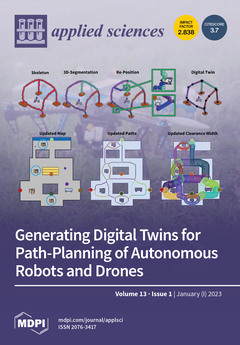Modern implant designs should allow for adequate primary stability but limit mechanical stress on buccal bone in order to prevent initial marginal bone loss. A dental implant characterized by a shift in core diameter and thread geometry was evaluated. Polyurethane foam was used as bone surrogate material and implant placement was performed measuring insertion torque and strain development on buccal bone using strain gauges as well as primary stability by using damping capacity assessments. An existing tapered bone-level implant was used as a control while the novel experimental implant described above (
n = 10) was used in the test group. Statistical analysis was based on t-tests (α = 0.05). Both the maximum insertion torque (
p = 0.0016) and maximum strain development in buccal bone (
p = 0.1069) were greater in control implants as compared to the novel implant design. Moreover, in the control group, these were reached at a significantly later timepoint of the insertion process, i.e., when the implant was almost fully seated (maximum insertion torque
p = 0.0001, maximum strain development
p < 0.00001). The final insertion torque (
p < 0.00001) and final strain development (
p = 0.0137) were significantly lower in the novel implant design while the primary stability of both implant types did not differ significantly (
p = 0.219). The novel implant design allowed for a greater undersizing of osteotomies while not mechanically overstressing buccal bone. Comparable primary stability was obtained from trabecular bone instead of compressing cortical bone as occurs in conventional, existing tapered implant designs.
Full article


